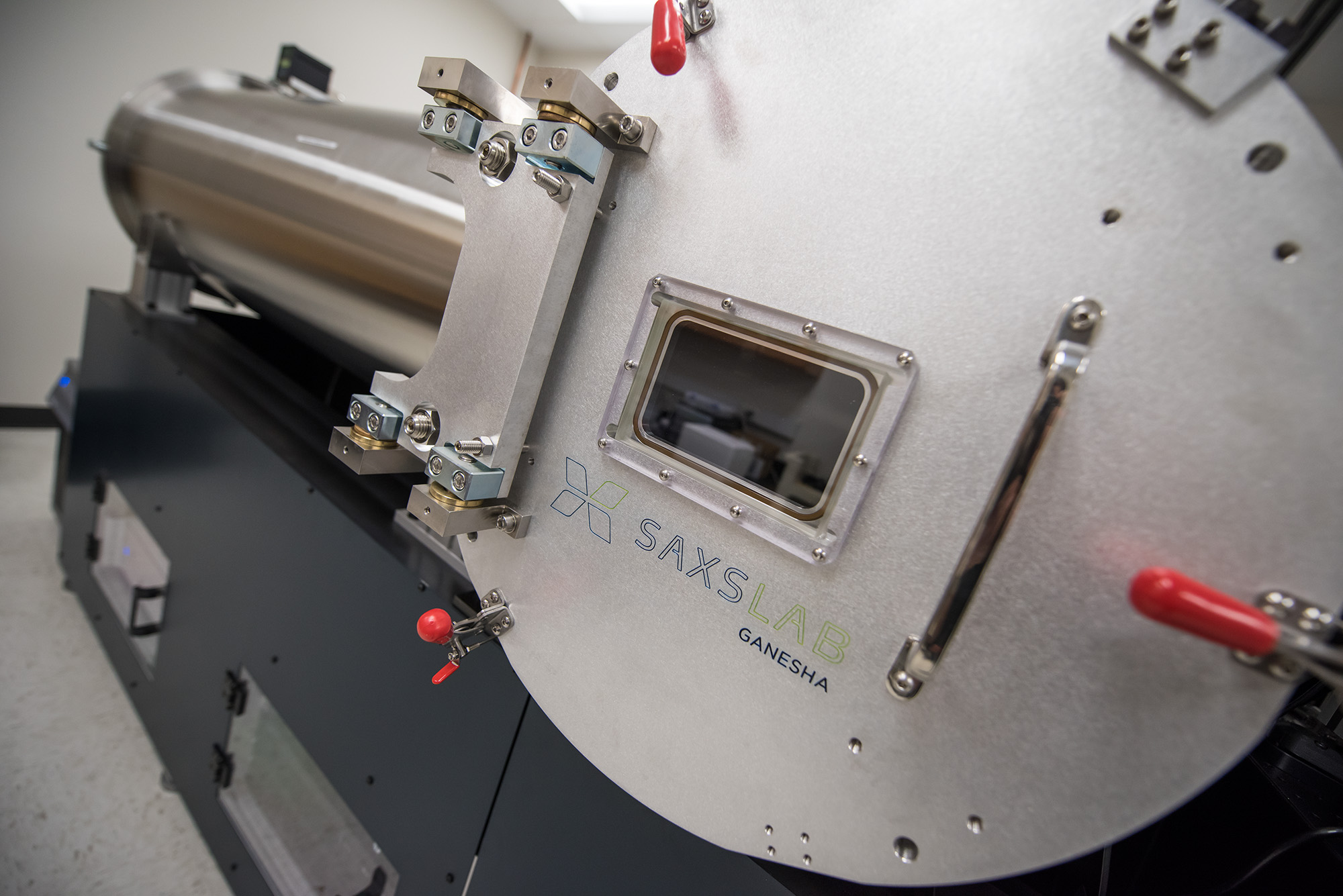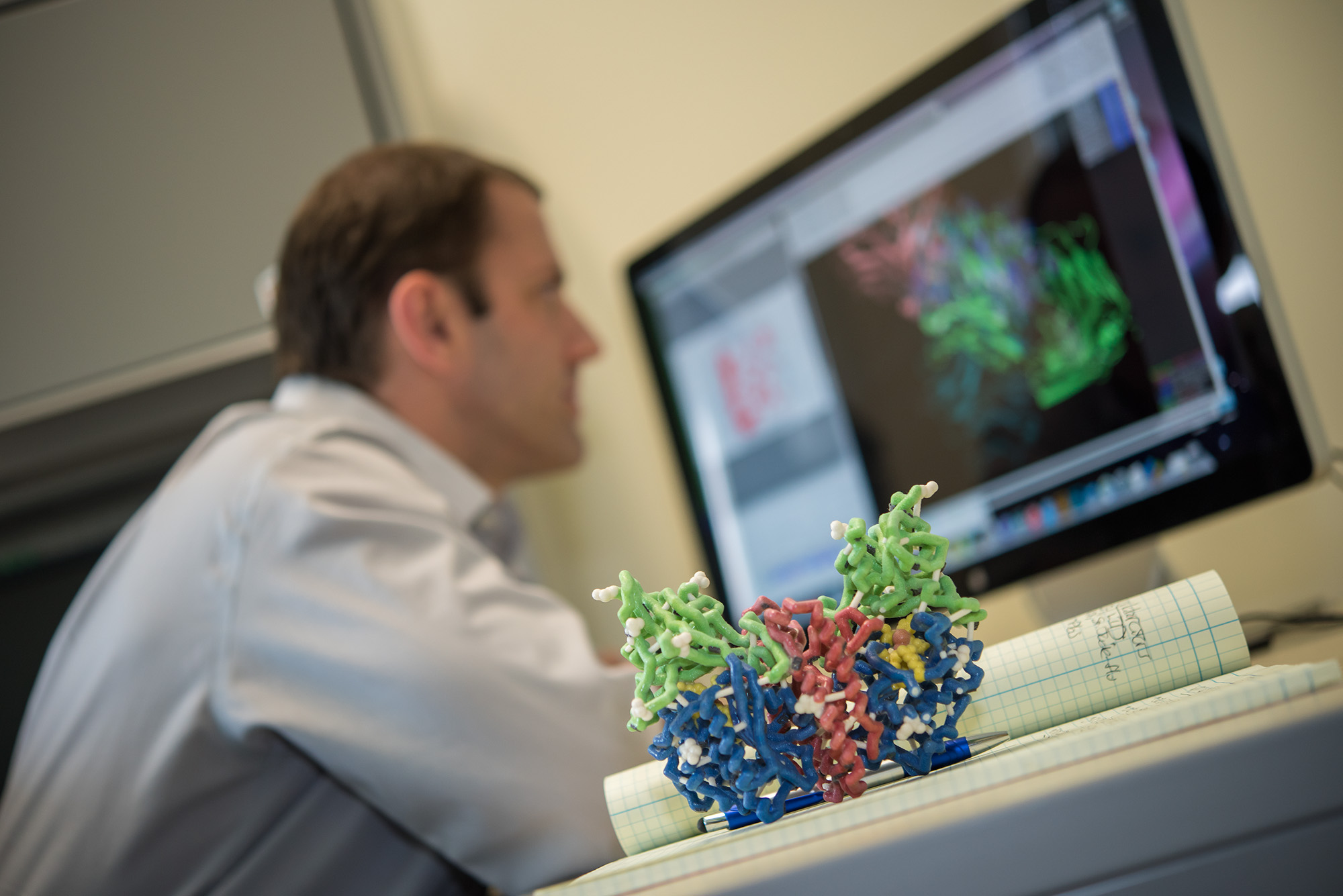
IBBR Study Advances Hepatitis C Vaccine Development
Hepatitis C virus (HCV) poses a tremendous global health concern as a cause of hepatocellular carcinoma and other liver diseases, with over 58 million people infected globally and 1.5 million new infections each year. Current direct-acting antiviral drugs are effective cures but expensive and subject to viral resistance variants, posing...

Deep Learning Modeling Server for T Cells Opens New Avenues in Immunology Research
A critical component of the human immune system is T cell receptors (TCR). With their diversity and specificity, they are able to recognize and bind to antigens from viruses, pathogens, and tumors, leading to a T cell immune response against infected or diseased cells. A deeper understanding of TCR structures...

Kyle Anderson Joins Editorial Advisory Board for the Journal of the American Society for Mass Spectrometry
Kyle Anderson was invited by the Editor-in-Chief, Vicki Wysocki, of the Journal of the American Society for Mass Spectrometry (JASMS) to join the Editorial Advisory Board. He was selected because he has been a frequent contributor and reliable reviewer for JASMS, and JASMS leadership hopes he will provide further valuable...
About IBBR
IBBR is a joint research enterprise of the University of Maryland, College Park, the University of Maryland, Baltimore, and the National Institute of Standards and Technology.
IBBR leverages state-of-art integrative methods for bioanalytical, biophysical and structural characterization of biomolecules: cryo-electron microscopy, nuclear magnetic resonance, x-ray crystallography, small angle neutron and x-ray scattering and mass spectrometry.
IBBR researchers seek to advance therapeutic development, biomanufacturing, and state-of-the-art measurement technologies, to support accelerated delivery of safe and effective medicines to the public.
IBBR is a major initiative and supported in part by the University of Maryland Strategic Partnership: MPowering the State (MPower) , an initiative designed to achieve innovation and impact through collaboration.
Connecting
IBBR Commons
Sophisticated state-of-the-art instrumentation and facilities, and in-house expertise located in shared space and dedicated to advance research, support collaboration and foster innovation of methods. Instrumentation and facilities include tools for high-resolution structural biology, bioanalytical and biophysical measurement, protein engineering and cell culture, advanced computation including artificial intelligence and deep learning methods, and general laboratory services. These capabilities and advanced training are available to IBBR scientists and collaborators.
IBBR Postdoc Program
The IBBR Postdoc Program (IPP) focuses on collaborative research involving basic science and technology development that advances therapeutic development, vaccine development, and biomanufacturing. IPP Fellow project teams are designed with a combination of the IPP Fellow career goals and priorities of project mentors who can be from academic, government, and/or industrial laboratories throughout the University of Maryland, NIST and the I-270 corridor.
NMRPipe
IBBR is home to NMRPipe, a popular collection of programs and scripts for manipulating multidimensional Nuclear Magnetic Resonance (NMR) data. The use of NMRPipe is noted in roughly 40% of all NMR structures accepted into the Protein Data Bank.

Upcoming Events
Wednesday, January 3, 2024 - 11:00am
BMD Staff Seminar ALL HANDS MEETING
Tuesday, January 9, 2024 - 11:00am
Wednesday, January 10, 2024 - 11:00am
Recent Publications
Redox-enabled electronic interrogation and feedback control of hierarchical and networked biological systems.
Microelectronic devices can directly communicate with biology, as electronic information can be transmitted via redox reactions within biological systems. By engineering biology's native redox...
Site-directed neutralizing antibodies targeting structural sites on SARS-CoV-2 spike protein.
'Epivolve' (epitope evolution) is an innovative paratope-evolving technology using a haptenated peptide or protein immunogen as a means of directing the in vivo immune response to specifically...
A Biodegradable "one-for-all" Nanoparticle for Multimodality Imaging and Enhanced Photothermal Treatment of Breast Cancer.
Silver sulfide nanoparticles (Ag2 S-NP) hold promise for various optical-based biomedical applications, such as near-infrared fluorescence (NIRF) imaging, photoacoustics (PA) and photothermal...
Structure and energetics guide dynamic behaviour in a T = 3 icosahedral virus capsid.
Although virus capsids appear as rigid, symmetric particles in experimentally determined structures; biochemical studies suggest a significant degree of structural flexibility in the particles. We...
Bacteriophage Endolysin treatment for systemic infection of Streptococcus iniae in hybrid striped bass.
Streptococcus iniae, a zoonotic Gram-positive pathogen, poses a threat to finfish aquaculture, causing streptococcosis with an annual economic impact exceeding $150 million globally. As...


